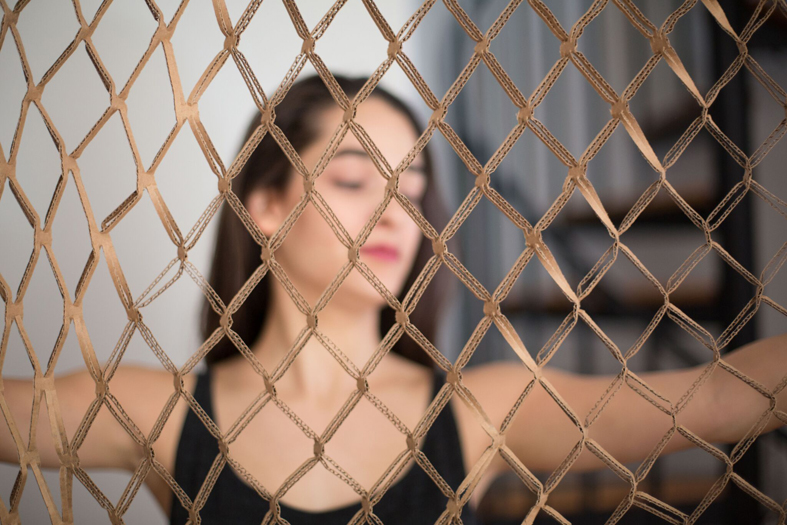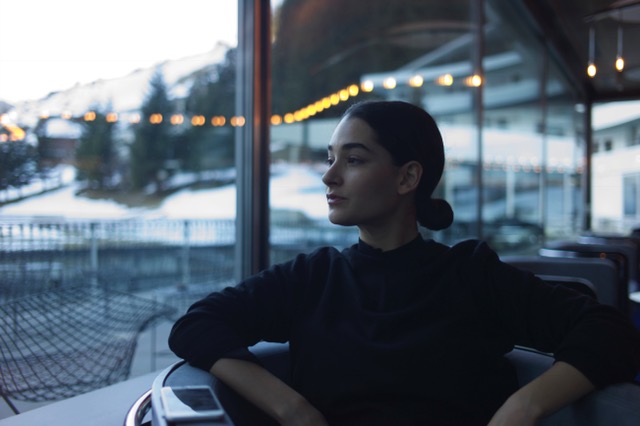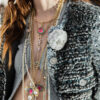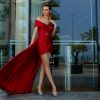
Talia Douaidy, a packaging designer based in New York, about her fascinating work at Baron &Baron on the art of packaging fragrances, cosmetics and fashion items.
- Who is Talia Douaidy? I’m a New York based packaging designer who was born in Paris. I grew up between Europe and the Middle East, from where I learned a lot about different cultures; these two regions were a source of inspiration in a lot of my current work. My personal background has impacted my approach in design, which I perceive as an effective and powerful tool for change. I currently work as a packaging designer at Baron &Baron, an advertising and design agency with unrivaled expertise in building luxury brands. My work focuses on packaging fragrances, cosmetics and fashion items.
- What led you to work on packaging design in the Fashion Industry? My previous experience in design has led me to work on a wide range of different products in various industries. It is true, most of the projects I have taken on in my professional career involved luxury brands. To be honest, I had never really foreseen ending up being so involved in the fashion industry per say. It is indeed so exciting to work on some of the most iconic brands out there (Maison Margiela, Jason Wu, Calvin Klein, Kate Moss, NARS etc.) The clients I work with always have a specific set of aesthetic standards, and it is my job as a packaging designer to satisfy those visual requirements while ensuring functionality. At Baron, we tackle every project in a unique way. Every detail is well thought of. Notions like structure, ergonomics, motion, sound are elements that define the way the package is elaborated. It is important to remember that those objects end up populating our visual environments and that one aspect of their function is, at the end of the day to make the consumer experience beauty, visually but also organically through smell, touch etc. I like to treat those products as art, as if they were destined to live on a shelf in a museum, like a piece of art.
- There is a lot more than design that goes into making the perfect package for a specific item, could you tell us what it really takes to create packages nowadays? The public seems to get more and more conscious of the importance and implication of packaging. From an environment perspective, there is a growing concern among the average consumer to minimize their effect on the planet. People are starting to feel responsible. This new awareness needs to be taken into consideration when designing packages, to allow the highest degree of sustainability while maintaining functionality and aesthetics. Biodegradable and reusable materials are obviously very helpful to minimize our human footprint. But beyond this choice, it is important to start considering the package as an entity of its own, with its own modular functionality and purpose, a role that can potentially go beyond the mere objective of “containing” the product. For some time now, I have been extremely interested in exploring the concept of a smart package, that is a container that reacts with its environment to optimize the user’s experience. The package can serve as a catalyst, clever enough to assess and eventually alter the way the product is consumed. I have designed a line of packages that I coined BioLogic, because it is based on mechanisms found in nature. They are made from engineered materials that can react on their own, without any external machinery to natural factors like temperature, light, UV rays, water and humidity. Those parameters affect properties like shape, appearance, form or texture. Those changes can in turn enhance the benefits but also cater to the user’s long term vital needs. By visually and functionally imitating elements and systems found in nature, the line of packages I have developed offers effective answers to many complex human challenges. To give you an example, I thought of a lip balm that reacts to cold, and anticipates chapped lips. The container’s structure is designed using a very specific type of engineered mesh, that gradually extends and changes appearance to the texture of cracked and chapped lips, when temperature drops, prompting the idea that the consumers’ lips are being exposed to a dry environment. Those examples reveal the potential changing effect that design can have on the way we consume products daily. I truly believe that the next generation of packages will have a role of their own, beyond the strictly aesthetic consideration that it obviously still needs to satisfy. I’m excited to be on the forefront of that thrilling adventure.
- Could you tell us about an unforgettable moment in your work so far, which one would it be and why? One of the most memorable work interactions I’ve had was the day I met Calvin Klein for the first time. Obviously, it was professionally an amazing experience to get his insight. On a more personal level, I told him about the impact that the CK one perfume had and still has on me. The looks of the bottle, the smell, the texture. It all reminds me of my adolescence. Whenever I see that bottle, I’m taken back 15 years. That’s also the power of packaging. That emotional connection.









